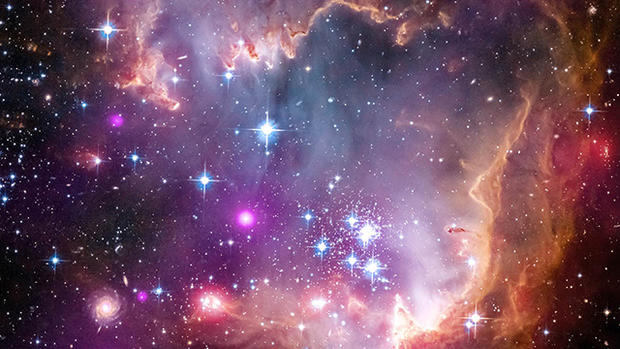Astronomers discover most distant galaxy yet
Discovering and studying distant galaxies allows astronomers to develop a better understanding of how the universe formed. The further the distance, the older the galaxy, and the more insight it offers.
Now, researchers are even closer to locating the first galaxies that formed after the Big Bang, the colossal event that created the universe about 13.8 billion years ago.
In a study published Oct. 24 in the journal Nature, astronomers from the University of California at Riverside explain that they've discovered the most distant -- and therefore oldest -- galaxy yet.
Galaxy z8_GND_5296 formed 700 million years after the Big Bang, when the universe was just 5 percent of its current age. The galaxy is producing stars extremely rapidly, much more rapidly than the Milky Way. This is consistent with other galaxies that formed within one billion years of the Big Bang.
In a joint effort between the University of California at Riverside, University of Texas at Austin, Texas A&M University and the National Optical Astronomy Observatories, astronomers sorted through Hubble Space Telescope images of more than 100,000 galaxies. Based on color, they selected 43 candidates to study further.
"The most reliable way to select galaxies is to use the color because the further out you go in the universe, galaxies get redder and redder," UC Riverside's Bahram Mobasher explained to CBSNews.com. "So, that is an indication of the distance." The color shifts as a galaxy expands over time.
Simply looking at red color is not enough to verify that a galaxy is the furthest away. Dust in the atmosphere will turn a galaxy red, Mobasher explained, so a nearby yet dusty galaxy will falsely appear to be distant. An abundance of heavy elements will also lead to a deeper red hue.
To account for these potential fallacies, the team next examined the candidate galaxies using spectroscopy using the Multi-Object Spectrometer for Infra-Red Exploration (MOSFIRE) instrument on the Keck Telescope in Hawaii.
"The MOSFIRE gives us a unique opportunity to study distant galaxies whose light shifts to the infrared," said Mobashar. "That confirmed the redshift, the velocity of the galaxy."
Spectroscopy measures the change in the wavelengths of a galaxy's light as it travels towards Earth, specifically how much it shifts towards the red end of the spectrum. This expansion velocity is called "redshift." Because redshift and galaxy distance are proportional, astronomers use redshift to determine distance.
The MOSFIRE instrument is able to detect infrared light in multiple objects at the same time, which allowed the astronomers to study all 43 candidates in just two nights.
They specifically looked at the Lyman alpha transition, a measurement of hydrogen emission, to see when the galaxy transitioned from an opaque state (when most of the hydrogen is neutral) to a translucent state (when the hydrogen is ionized).
The Lyman alpha transition is present in most galaxies that formed more than one billion years after the Big Bang. Detecting it in older galaxies is difficult, but that doesn't mean the galaxies don't exist, explained co-author Naveen Reddy of UC Riverside.
"The difficulty of detecting the hydrogen emission line does not mean that the galaxies are absent," Reddy said in a statement. "It could be that they are hidden from detection behind a wall of neutral hydrogen."
In this galaxy, the redshift measured 7.5. This beats the former distance record of 7.2.
The team will return to the Keck telescope in November and December to examine other galaxies.
"This is just an absolutely exciting time for doing this type of research," Mobashar added, "because the Hubble Space Telescope and the Keck telescope, they compliment each other and pave the way for finding more and more of these distant galaxies. By looking, we essentially look back in time. The further away we look, further back in time we look.
"We are at the point where we can study and understand how galaxies form, and we're going to find more distant ones, absolutely."
Editor's note: This story was updated at 2:41 p.m. ET to reflect that the galaxy formed 700 million years after the Big Bang.

